Let’s Talk: Pressure Cooking {why + what kind + resources}
Whether you are new to pressure cooking or experienced, this post has tons of valuable tips and info- everything you need to know!
I delved into the world of pressure cooking a few years ago after I decided to get over my unearthly fear of exploding pots, put on my big girl apron and make it happen. I mean, if my grandma could do it, so could I. Right? Plus the appeal of making cheesecake in a pressure cooker was just too much to resist.

I’ve had lots and lots (and lots) of emails over the last six months or so about pressure cooking. It seems as though it’s coming out of the gray shadows of old generations and becoming a bit more mainstream and even slightly trendy. Many of you want to know: if I pressure cook, how I pressure cook, what I use to pressure cook and mostly, do I have a flippin’ InstantPot yet.
So let’s talk about pressure cooking for a sec. When I decided I wanted to learn more about it (after reading that the pressure cookers of today most likely were not going to explode like grandma’s old tank), I started reading reviews. Blogs. Forums. Everything I could get my hands on to figure out what kind of pressure cooker I wanted to get. After spending more time on this than should be deemed acceptable (my toilets and exercise routine suffered), I settled on a regular, old stovetop model: this lovely Kuhn-Rikon pressure cooker.
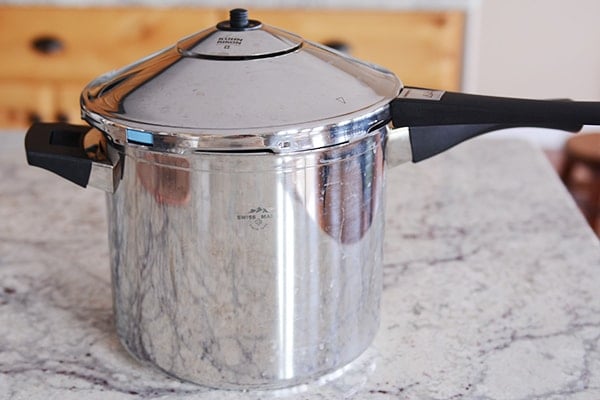
The #1 main reason I went for a stovetop vs. electric was capacity. I have a large family (five hungry kids and two always hungry adults) and I am often cooking for others. I wanted to be able to make a lot of food. Many of the electric models maxed out at sizes that didn’t appeal to me (especially when you factor that many pressure cooker recipes like soups and stews can only fill the pressure cooker halfway for safety reasons).
I know the Kuhn-Rikon isn’t the most budget-friendly model out there, but again, after reading all the reviews known to man, I wanted a foolproof stovetop pressure cooker that I was absolutely sure (ok, at least 98.9% sure) wouldn’t explode on me and would last pretty close to forever. And this one has such incredible reviews (durability, safety, size, etc) that I knew it was the one for me (plus, I have several other Kuhn-Rikon items in my kitchen and already new the quality was unsurpassed). There are a lot of other fantastically reviewed stovetop pressure cookers, all of which are largely safer than the pressure cookers of several generations ago, on the market so do your research if you are in the market for one.

In case you are new to the world of pressure cooking and are wondering why one would ever want to pressure cook in the first place, here are a few of the reasons why I love it: It’s faster for many foods. It’s more efficient and uses less energy. The nutrition in food is better preserved thanks to the fast cooking times and high temperature. And in the interest of full disclosure, I just feel like a rock star when I pressure cook anything.
Updated to add: I forgot to mention one of the main reasons I love my pressure cooker(s) is because they can cook a frozen piece of meat in a shockingly short amount of time (compared to conventional methods) and for someone that regularly forgets to thaw meat, this is just wonderful.
I think a pressure cooker is a great idea for anyone who loves flavorful, delicious, versatile food and wants the challenge of making it in a fraction of the time it would normally take. Busy mom or adventurous cook (or both!) – a pressure cooker is something to look into.
Now, I’m not going to lie, the first few times I used my pressure cooker, I was disappointed. It wasn’t everything I hoped it would be. 100% of that was because I was so scared to let it come to high pressure (those double lines below) that it compromised the food I was cooking. Again, my healthy fear complex was coming into play. Also, pressure cooking on an electric stove vs. a gas range is a bit different and I’ve learned to heat the pressure cooker to desired pressure on one burner and once it comes to pressure, immediately move it over to another burner that’s been sitting on low temp (or whatever temp is needed to maintain the pressure).
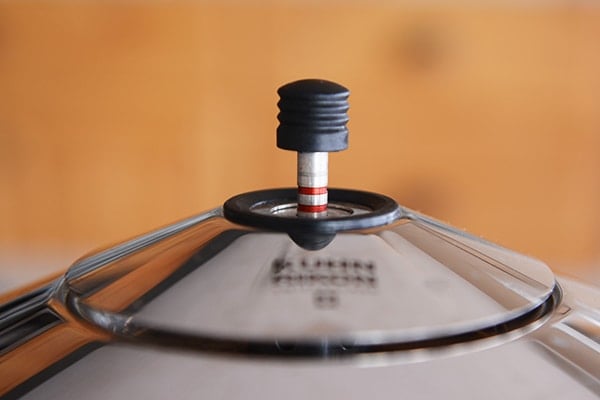
Now that I’m more comfortable with it, I use my stovetop pressure cooker all the time. At least weekly but there are some weeks where I’ve used it every single night. It’s honestly revolutionary once you wrap your mind around the benefits.
One night I was making this taco soup and forgot I didn’t have any canned black beans. But I did have dry beans (thank you, almighty food storage)! In no time, my pressure cooker magically transitioned those dry beans into tender morsels and dinner was saved. Pretty slick.

But. Stovetop models are clearly not the only solution, especially for newbies.
Over the last few months, I’ve been inundated with emails from many of you asking me about the InstantPot. Sounds like many of you have bought one, received one, or put one on your wishlist. They are quite the popular appliance right now and with more than 4,000 5-star reviews, it’s easy to understand why. I didn’t have one and really had no intentions of getting one since I love my stovetop pressure cooker so much (and let’s be serious, I just don’t need another appliance in my already packed kitchen, Brian’s shaking his head fervently in agreement). However, a few weeks ago, on a very sad day in December, my beloved slow cooker that I’ve had since we got married (13 1/2 years ago) quit. Died. Left us. After a proper mourning period, I hopped onto Amazon and figured out what I should do. New crockpot? Or should I go for the InstantPot to see what all the rage is about (the InstantPot slow cooks as well as pressure cooks). Even better, I emailed the InstantPot company to see if they’d send me one for an honest review (and future giveaway – woot!). They kindly said yes. I did a bad cartwheel. And my InstantPot showed up that week.
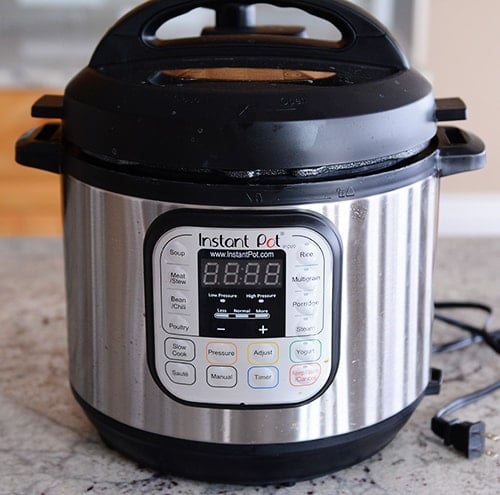
So let’s talk about the InstantPot. This thing is a beast. It can do like 436 things (<- slight exaggeration). Yogurt. Slow Cook. Rice. Pressure Cook. It’s definitely a workhorse. The capacity is decent. Six quarts (same size as my old slow cooker but a little smaller than my stovetop pressure cooker). Because there are so many functions, the learning curve takes some time, in my opinion. As in, what the heck button am I supposed to push? But there is a user manual for manual-needers like me.
So far I’ve made yogurt (turned out great but I like my stovetop method for now just based on familiarity, I think) and risotto (delicious) and 5-minute steel cut oatmeal (fantastic although 5-minutes is a bit misleading if you count the time it takes to come to pressure and then cool down). I’ve also made several recipes from my site – just adapted them to the pressure cooker (see bottom of the post). And of course we’ve made pressure cooker potatoes. Possibly one of the best thing to make in a pressure cooker, electric or stovetop (that and pressure cooker green beans, ohmygosh yum).
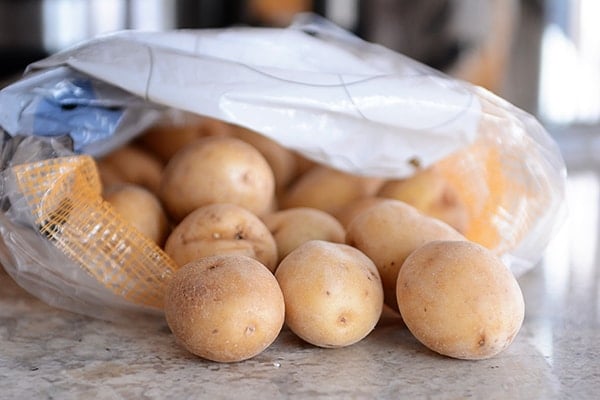
I mean look at all those options. It’s mind boggling (and a little overwhelming).
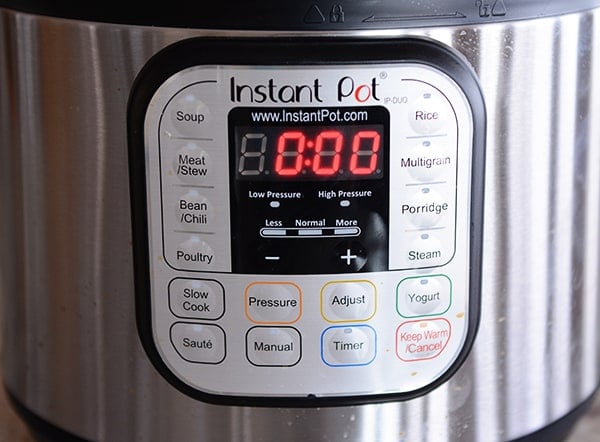

I know you want to know. Which would I buy again? What’s the best choice? Has the InstantPot changed my mind about stovetop pressure cookers?
Having used both a stovetop and an electric pressure cooker now, I’m hard pressed to say which one I’d choose over the other (I know, I know). I have a very soft spot for my Kuhn-Rikon stovetop pressure cooker. But I’m not going to lie, I am loving the InstantPot. Last week, there were three nights I had them both going at the same time. And last night, I made this amazing riff off of a favorite baked pork chop and apple recipe in the InstantPot while using my stovetop pressure cooker for a batch of white cheddar garlic mashed potatoes, still having time to dump out the potatoes and whip up a batch of pressure cooker turkey bacon green beans before the pork was done. It was all prepped, cooked, and on the table in less than an hour and was one of the most delicious meals ever. #pressurecookingforlife
The main advantage of the InstantPot (and other electric models) is that it is fix it and forget it. I can set the InstantPot to pressure cook my taters and walk away and help child A, B, C or D with homework (or even run out and get the mail or maybe hide in the pantry and eat chocolate chips for a sec), whereas I always keep a pretty close eye on my stovetop pressure cooker when it’s going just in case it goes over pressure and I need to pull it off the heat. It obviously doesn’t self-regulate like the InstantPot. But. It’s bigger. And I love that. Plus, I’ve used it as a regular stockpot for a large batch of soup and a few other things.
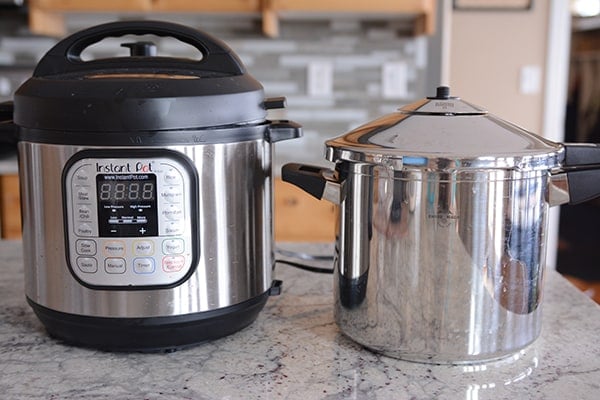
At a glance, here’s the pros and cons of each:
(this is clearly not a comprehensive list, just a few of my personal highs and lows of each)

It’s easy to see there are advantages and disadvantages of both, and like I mentioned above, if you are interested in pressure cooking, start reading up on and it you’ll figure out which pressure cooker is right for you.
A quick note about those pressure readings: the InstantPot, even at high pressure (maxes out at 11.6 psi), doesn’t cook as high as my stovetop (up to 15 psi) which means if you’re using a recipe that says cook at high pressure, you may need to add time on the InstantPot (most electric pressure cookers max out at around 11 or 12 psi).
Either way you look at it, pressure cooking is a fabulous way to cook food. I love it. Like, I’m kind of obsessed. It took me a long time to get over my fear; don’t be like me!
Depending upon your interest, I’ll do more posts (and videos) on pressure cooking in the future but don’t forget that the world wide web is a goldmine of pressure cooking information and recipes.
Here are a few of my favorite online resources.
Hip Pressure Cooking (so many reviews, resources, tips, videos, forums and recipes); here’s her post on the Kuhn-Rikon (it kind of sold me on it) and on the InstantPot (pretty informative!)
Pressure Cooking Today (Barbara is a seasoned food blogger who has some great recipes for pressure cooking + tips on how to use electric models)
Dad Cooks Dinner
Miss Vickie’s (a little old school but some great info and recipes)
How to convert a normal recipe to pressure cooking.
There are hundreds of recipes on my site (and across the web) that aren’t official pressure cooker recipes, per se, but they are very pressure cooker friendly. Honestly, one of the easiest ways to figure out how to convert a recipe over to pressure cooking is to google another similar recipe (for instance “pressure cooker beef stew”), take a glance at the cooking times and adjust it for the recipe you want to use (like this fabulous beef stew which is remarkably delish in the pressure cooker).
There are also handy dandy pressure cooking charts (I have this one bookmarked on my iPad) that make figuring recipes out pretty easy and the little manual that came with my Kuhn-Rikon has been invaluable, too.
So far I’ve made the following recipes from my site in my pressure cooker with phenomenal success + many others from across the web including that amazeballs cheesecake.
Phew! And I think that’s it.
I’m clearly a little longwinded when it comes to pressure cooking.
So tell me.

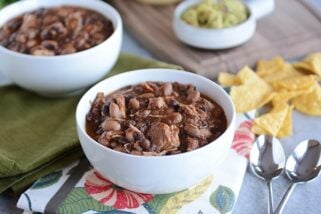
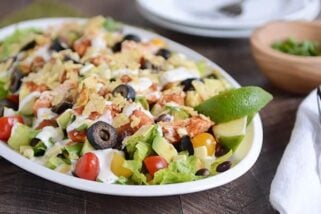
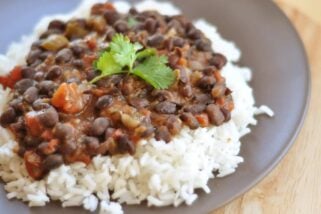
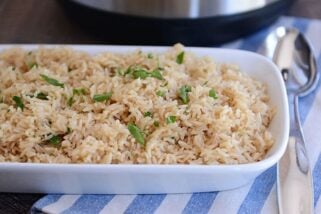
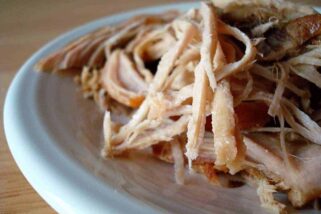
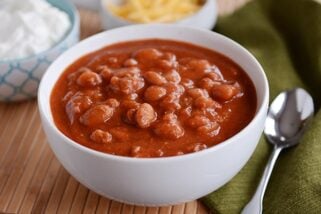
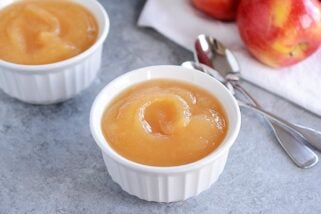
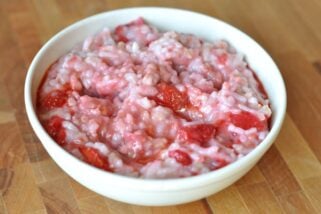
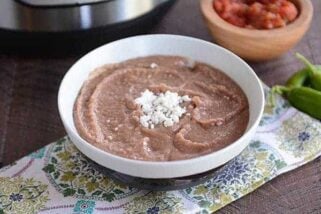
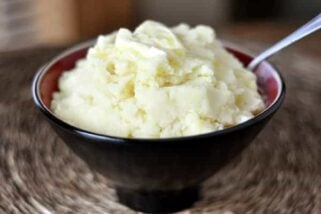
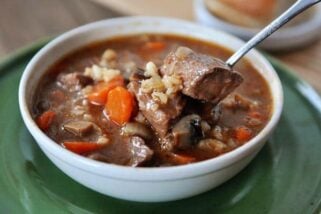
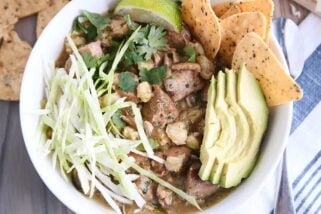
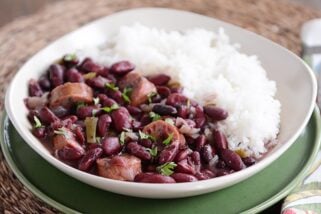
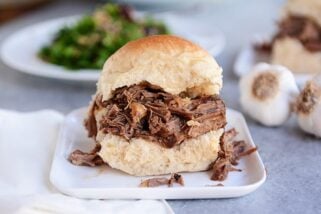
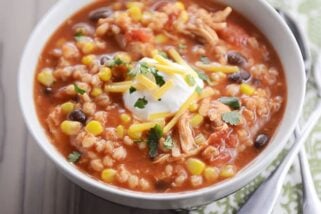
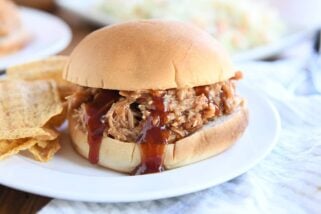
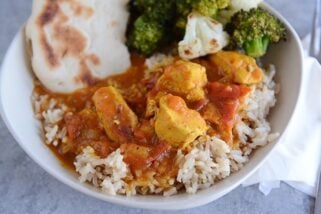
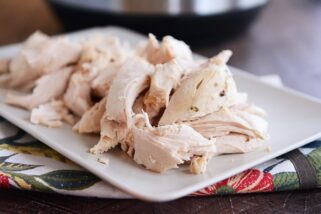
Any chance you have a insta pot risotto recipe? Thanks for all the amazing recipes!
I don’t – sorry!
Thanks for this post. I just ordered my Instant Pot from QVC and now I’m looking for recipes and tips. Can’t wait to try your mashed potatoes and beef stew. Can you please share the recipe for the bacon green beans you mentioned in this post?
I’ve made this recipe (with some adaptations): https://www.soulfullymade.com/instant-pot-southern-style-green-beans-and-bacon/
Thanks! Currently, the 8qt IP is actually cheaper than the 8qt Fagor, so with that choice I’d probably go with the IP. I’m waiting for a good sale though. Hope there will be one soon!
Mel, I’ve been thinking for a long time about getting an InstantPot. My question is this: is it really all that much better than another brand’s electric pressure cooker? I’ve googled and googled, but I really can’t decide if it’s just hype about this specific brand or somehow people are now interested in pressure cookers and just getting the instant pot because that’s what all their friends have. Any ideas?
That’s a great question, Chava – and honestly, I don’t know. I’ve only ever used an Instant Pot. I know lots of people who have the Fagor brand and love it (the girls at https://tidbits-marci.com/ use a Fagor more than an IP, I think). I don’t think the IP is the end all of electric pressure cookers, but they definitely are the most popular.
I have a big 16 qt that I love, however, there are so many more recipes in the test kitchen pressure that I’d like to try. Do you know if I can use the 8qt in the 16 qt as is or should I double? Thanks
You can definitely make smaller quantities in a larger pressure cooker.
I’ve been making and loving you’re recipes for years now. When you started gushing over the instant pot I thought maybe one day I’ll buy one. Well, I saw a great deal on black Friday and decided to go for it. Fork tender beef stew in 30 minutes ! Perfect hard boiled eggs without the shell sticking ! I think it enhances the flavor of everything too. It has become my favorite kitchen tool… well, it’s a tie with my Vitamix lol. I’m aware you can make cheesecake in it , but I just saw today a recipe for Mason jar cheesecake in the instant pot. Of course, I thought of you, and really hoped you had some input on this haha.☺️
Hey Gigi! So glad you are happy with your IP purchase! I’ve made cheesecake in the IP (amazing!) but I haven’t tried it in mason jar form. That sounds amazing! I’m going to try it!
Sweetest Mel. I need your help! I know you are picky when it comes to cookbooks (I am the same way!). But I just have to know. Do you happen to have any pressure cooker/instantpot cookbook recommendations? Curious for myself but also trying to get a gift for my wonderful sister-in-law who has mentioned her fear of her instantpot.
Hey Emily! I have a couple Instant Pot cookbooks I love. Great Food Fast by Bob Warden is excellent. Really straight forward and almost every recipe I’ve tried is delicious. Another one is The Electric Pressure Cooker Cookbook by Barbara Schieving (I love this one and her blog pressurecookingtoday.com). Hope that helps!
I use my pressure cooker at least twice a week. The family loves the choice as I search the internet for recipes and better ways to use the appliance. Keep more recipes coming. Love your site, colourful and informative. Thanks Shelly
Hey Mel, thanks for putting this guide together. I’m trying to decide what kind of PC I want, and to be honest the stove top pressure cooker kind of scares me. I’m glad I’m not the only one! The tip about using two burners is a good one though, I’m going to have to try that. Are there any recipes that you love that you couldn’t cook in the instant pot because it doesn’t go to a high enough pressure?
Even though I love my stovetop pressure cooker, I find I almost only ever use my Instant Pot these days. There hasn’t been a recipe yet that I’ve felt like couldn’t be made in the IP – although some do take a little more time (because of the lower pressure). But it’s usually only a matter of minutes.
I LOVE my instantpot 7 in one. I have used it about every day after i got it! everything seems so yummy. Thanks for your wonderful blog and please post more recipes using the ip. its a bit tricky to convert recipes. also if it ever goes on sale please let us know. I’d like to get one for my married kiddos…
I am trying to decide which size to get and I’m wondering if I should get the 6 or 8qt? I have a family of 5 and part of me thinks bigger is better, but in this case, is it? Would you go bigger?
I think for a family of five the 6-quart is plenty big but if you ever entertain or want the assurance of a bigger size (and budget can be flexible), I’d definitely recommend the 8-quart. You can make the smallest of small batches in either size, but the 8-quart will give you a lot more flexibility in larger recipes.
Thank you so much! You convinced me to go with the 8 qt.
I hope you love it, dana!
Thank you so much for this informative post and links! I received and instant pot for Christmas and am excited but totally overwhelmed and this post helped me feel like maybe I could handle it. I love your blog. Thanks so much for writing it!
I’m completely new to pressure cooking. As my kids get older and I always have other kids in the house, it’s getting harder to cook dinner. I love to cook and use so many of your recipes. I am hoping the instant pot will put us back on track for eating home cooked meals. When a pressure cooker recipe is a one pot rice and meat, what instant pot setting should I use? The rice or the type of meat? Thanks for this post. I’m late getting into this but I was happy I remembered you already had some information up.
That is a bit tricky if you are cooking both at the same time. I wouldn’t combine the two unless the meat is in small pieces if you are using white rice (since white rice cooks in about 4 minutes in the instant pot). The meat can be in larger pieces if using brown rice, since the cook time is about 22 minutes. Ultimately you want to go with the time to cook the meat all the way without overcooking the rice. Does that help?
I think so. The recipe I found used bone in chicken with rice and cooking the chicken and then adding rice. I think I’ll just do what you recommend and use chicken pieces that will cook with the rice. If doing that, should I just use the rice setting?
I made your smokey lentil and potato soup today in the Instant Pot. So yummy and a great starter recipe. Thanks for the help.
I suppose you could use the rice setting. To be honest, I’ve had the best luck just using Manual and then dialing up or down to the minutes I want.
Hey! Thanks so much! I’ve been really interested in this and now it’s on my Christmas list! I’d prefer the countertop version. There’s an 8-quart at Costco right now. It says hat you CAN NOT use it to can over 2000 feet, and it says that it does not work as effectively over 2000 feet above sea level for everything else. Have you heard this? Is it concerning because I’m above that? I’m assuming that all brands are similar, but maybe I need to do some more research.
Hi Diane – I don’t use my pressure cooker to can but I haven’t heard about pressure cookers being less effective over 2,000 feet. I wonder if it depends on brand?
yah!!! can you do a recipe for butternut squash soup cooking the squash in the pressure cooker…I so would rather spend my time assembling a quilt then cooking. Thanks for all your hard work.
Have a batch of brownie batter muddy puppies made for next to my sewing machine now…yum!
I always do a big batch of steel cut oats in my crock pot. Could the insta pot do that?
Thanks!
Yes! 3 cups water to 1 cup steel cut oats, high pressure for 3 minutes, natural release. That’s how I make them at least once a week around here! 🙂
Mel you have convinced me to get an instant pot! My dilemma is in choosing a size. They have a 6qt and an 8qt. I have a family of 7 so I think we would get great use out of the larger size, but I worry that I wouldn’t be able to cooker smaller batches in it such as four servings of oatmeal. Do you know of any problems with cooking small meals in a larger cooker?
Hi Rachel – that’s the one great thing about pressure cookers – you can cook really small quantities even in a large pressure cooker so if you are on the fence, I’d probably go for the 8 quart!
Hi Mel, I see that there is an 8 qt instant pot available. Would you get that one instead of the 6qt? I would like the larger size, but not sure I have room for it on my counter and cupboard.
That’s a really good question, Shannon. I always thought I would like an 8-qt but honestly, having the 6-qt is perfect for us. There’s only been a handful of times I wished I could fit more in (and only cooking for company – the 6-quart is plenty big for our family). If the cost isn’t exorbitantly more, I’d probably go for the 8-qt but if it’s a lot more expensive, I think the 6-qt is great.
Thank you!
Hi Mel,
This post is so awesome!! I do have a quick question though, you mentioned that you were able to make your baked pork chops with apples and onions in your pressure cooker …how did you convert that? Did you add some extra liquid to the pot and about how long did you cook it for? I’m going to try to make this dish this weekend! Thank you so much for everything you do…you have turned me into a kitchen queen!!! 🙂
I just threw it all in there (apples and onions on the bottom) and cooked it for about 10 minutes high pressure. The pork chops were fall apart tender so if you want them a little more firm, you might cook it for less time.
Would you say I should get the 6 qt. size Instapot? I see the same one you have but in 5 qt is on a great sale on amazon. We are a family of 7 and I think I need the 6 qt. What are your thoughts?
Yeah, for a family of 7, I’d definitely say the 6-quart would work better. I don’t alway use it to the maximum for our family of 7 but I like knowing I can make a lot. You might read reviews on the 5-quart though – if it could do what you want it to, it would be nice to snag a deal.
I ended up getting the 6 qt. version with only 6 features (no yogurt making) but it helped get the price down a bit. I am about to use it for the first time this weekend!!
My husband surprised me and a package from Amazon just showed up on my door step with an Instapot in it! I am so excited but also a little overwhelmed! I remembered that you had just done a post about it so I came right here. I am a little less overwhelmed after reading your tips and tricks and am excited to get started with this thing!
What a fun surprise!
Thanks for your great post! I, too, always heard the pressure cooking horror stories, so have never even learned to preserve food requiring pressure cooking. The Instant Pot is intriguing, though. Also, wondering if you might sometime consider a post on cooking on a gas range versus electric? I’ve only ever used an electric range, but am tempted to do gas the next go around (either is an option). Thoughts? Pretty please with sugar on top?! 🙂
That’s a great topic, Darlita – unfortunately I’ve only ever had electric stoves (in all our moves) but have cooked on gas when I’m visiting family. I don’t think I’m quite the expert but I do now if I ever had the choice I’d probably go for gas because of how it heats.
Thanks so much for taking the time to reply! I hope you get your gas range someday! 🙂
I’ve been debating about getting an Instant Pot, and your post helped seal the deal. I’m excited to try a variety of recipes in it.
My Mom cooked with a pressure cooker. She didn’t use it for years and doesn’t have it any more. I did not understand the uses and I guess I still don’t. Interesting reading though…love your style of writing!
Thanks for this! I just got an instant pot for Christmas. Ive used it many times already. I’m the worlds worst rice cooker so when perfect rice came out, I was hooked! Thanks for the info.
Hi Mel,
I have been trying to convince my wife that we “NEED” an instant pot for the last several months or so and she hasn’t budged since we already own a larger stove-top pressure cooker. So I was ecstatic when I saw the link to this post in my email because I knew if it had your stamp of approval she would have no choice but to change her mind! So since I finally got the go-ahead, I was wondering if there was any way I can give them your name when I purchase so they know you were responsible for a sale?
PS I just saw on their FB page that they plan on releasing an 8 qt model this spring!
Hey Jared – that’s awfully nice of you to ask about that! If you buy it from Amazon you can use one of the links up above as an affiliate link (doesn’t cost you anything extra but gives me credit for the sale). If you are going into a local retailer, they probably won’t know or care about me. 🙂 But you could always mention it. Thanks for even thinking or caring about that! Also, SO excited about the 8-quart potential!
Last night we put your Crock-pot Country Style Pork and White Beans into the Instant Pot (mostly because I forgot to put it into the crock-pot in time). Dare I say it was even better!?! We did Stew setting for 30 mins with the natural release. Then when it came out we also added some smoked chipolte powder. TO. DIE. FOR. Thank you for your great recipes.
Have you made your red berry risotto in the InstantPot? Would love to have a quick way to make it on a week day morning without having to watch it every minute so it doesn’t bil over..
I haven’t tried it yet in the InstantPot (just in my stovetop pressure cooker).
Great timing on your post. I just received and Instant Pot on Sunday for my birthday. Can’t wait to see what great recipes you post for it.
A friend got me an Instant Pot and I am loving it. Add your stroganoff recipe to the list. it also does a great job with drumsticks, gratin potatoes (super quickly), and a whole spaghetti squash, …I am looking forward to new recipes!!!!
looks like the instant pot is on sale for $120 on Amazon right now. About 50% off the list price if anyone is interested
LOVE my instant pot! If you are thinking of getting one, get it. Don’t be afraid, try the water test and you will see it is simply a matter of flipping the lever closed – it is fool proof – honest 🙂 You won’t regret it. Just my husband and I and I still use it multiple times a week. Brown rice, whole chicken, various cuts of meats come out amazing, pot roast with carrots and potatoes, beans, etc. One of my repeats is taking your Slow Cooker Pork Carnitas marinade on a pork tenderloin and cooking it in the IP. Yumo! Can’t wait to see more posts with recipes!!
I use a stove top pressure cooker at least 2 x a week. I love it! As a matter of fact I just made a pot of chicken alphabet soup in it last night. Tasted like it had cooked all day flavor but took tops 30 minutes, even with using frozen chicken. I am very intrigued about the instant pot though.
My crockpot of over 16 years just broke and now I am considering an InstantPot–thanks to your post! Just wondering–my crockpot was oval and so it was easy to lay chicken breasts or whatever on the bottom when the recipe called for it. The InstantPot seems much more narrow in the base. Do you think that would ever present a problem in using it as a crockpot? Thanks for your help!!
That’s a great question, Melody, and I totally know what you mean. I’ve only used the slow cooker function a time or two on the InstantPot and I was using it for recipes that I’d made before in my similarly-shaped slow cooker. But I also have an oval slow cooker and I can see how in the InstantPot some recipes may require you to layer meat on top of each other. I don’t think it necessarily presents a problem unless the recipe you are using is too large for the 6-quart InstantPot.